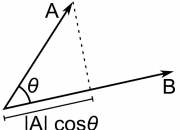Motion And Force: Learning objectives at the end of this chapter the students will be able to:
- Understand displacement from its definition and illustration.
- Know velocity, average velocity and instantaneous velocity.
- Learn acceleration, average acceleration and instantaneous acceleration.
- Understand the significance of area under velocity-time graph.
- Recall and use equations, which represent uniformly accelerated motion in a straight line including falling in a uniform gravitational field without air resistance.
- Recall Newton’s Laws of motion.
- Describe Newton’s Law of motion as rate of change of momentum.
- Define impulse as a product of impulsive force and time.
- Describe law of conservation of momentum.
- Use the law of conservation of momentum in simple applications including elastic collisions between two bodies in one dimension.
- Describe the force produced due to flow of water.
- Understand the process of rocket propulsion (simple treatment).
- Understand projectile motion in a non-resistive medium.
- Derive time of flight, maximum height and horizontal range of projectile motion.
- Appreciate the motion of ballistic missiles as projectile motion.
We live in a universe of continual of continual motion in every piece of matter. The atoms are in a state of never ending motion. We move around the Earth’s surface, while the earth moves in its orbit around the Sun. The Sun and the stars, too, are in motion. Everything in the vastness of space is in a state of perpetual motion.
Every physical process involves motion of some sort. Because of its importance in the physical world around us. It is logical that we should give due attention to the study of motion.
We already know that motion and rest are relative. Here, in this chapter, we shall discuss other related topics.
Displacement
Whenever a body moves from one position to another, the change in its position is called displacement. The displacement can be represented as a vector that describes how far and in what direction the body has been displaced from its original position. The tail of the displacement vector is located at the position where the displacement started, and its tip or arrowhead is located at the final position where the displacement ended. For example, if a body is moving along a curve as shown in Fig. 3.1 with A as its initial position and B as its final position then the displacement d of the body is represented by AB. Note that although the body is moving along a curve, the displacement is different from the path of motion.

If r1 is the position vector of A and r2 that of point B then by head and tail rule it can be seen from the figure that
d=r2-r1
The displacement is thus a change in the position of body from its initial position to its final position.
Its magnitude is the straight line distance between the initial position and the final position of the body.
When a body moves along a straight line, the displacement coincides with the path of motion as shown in Fig. 3.2. (a)

